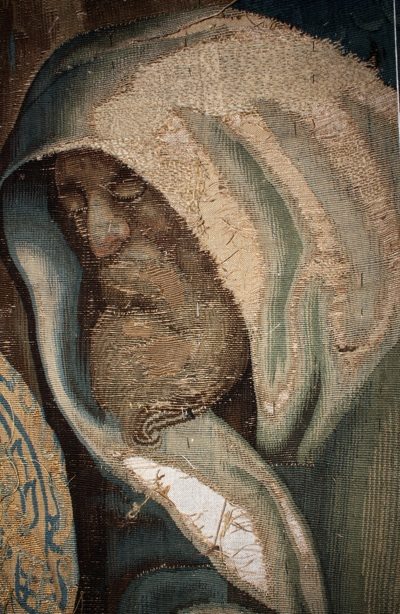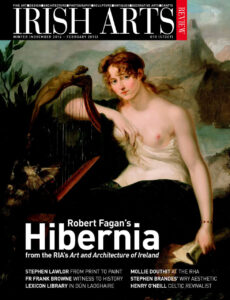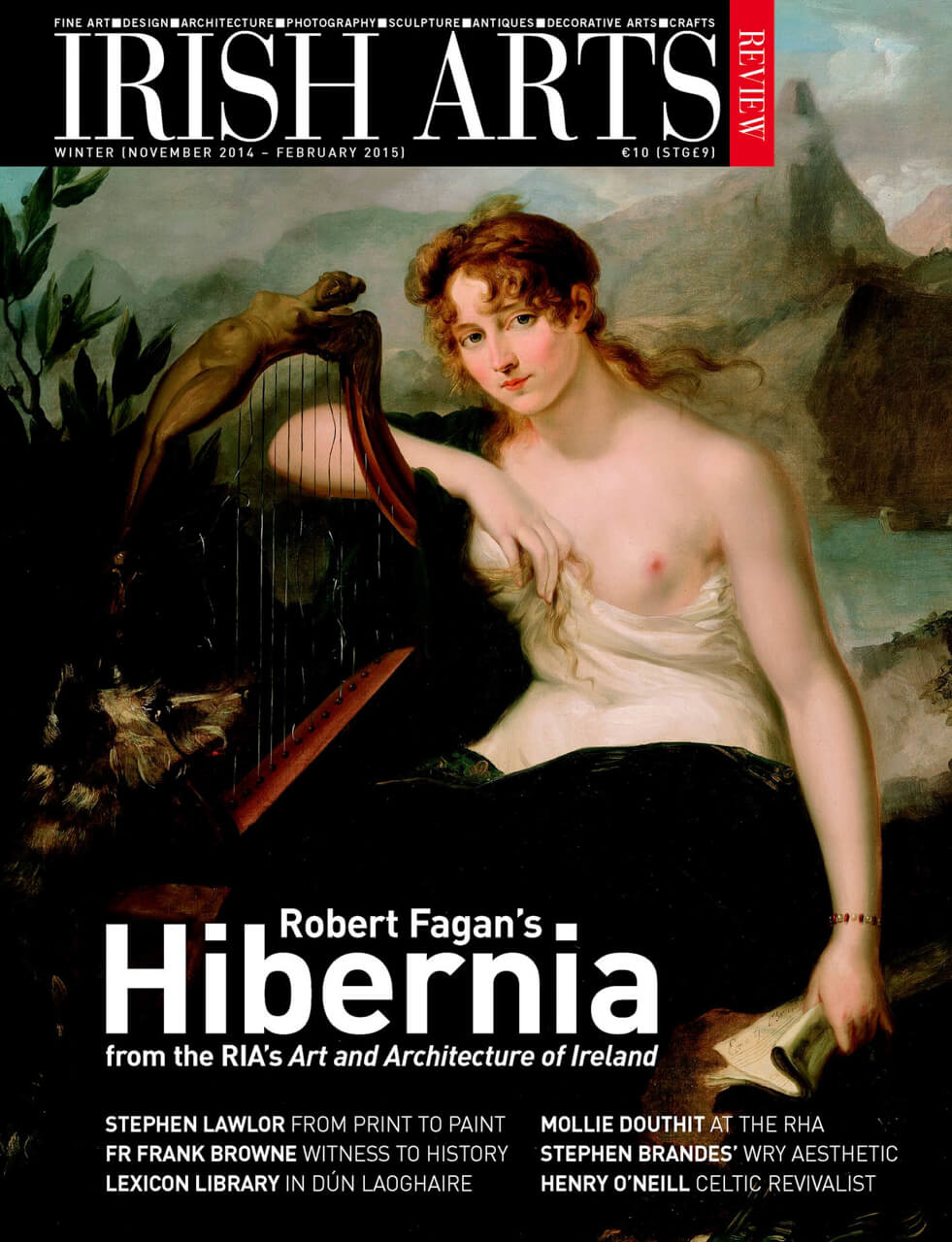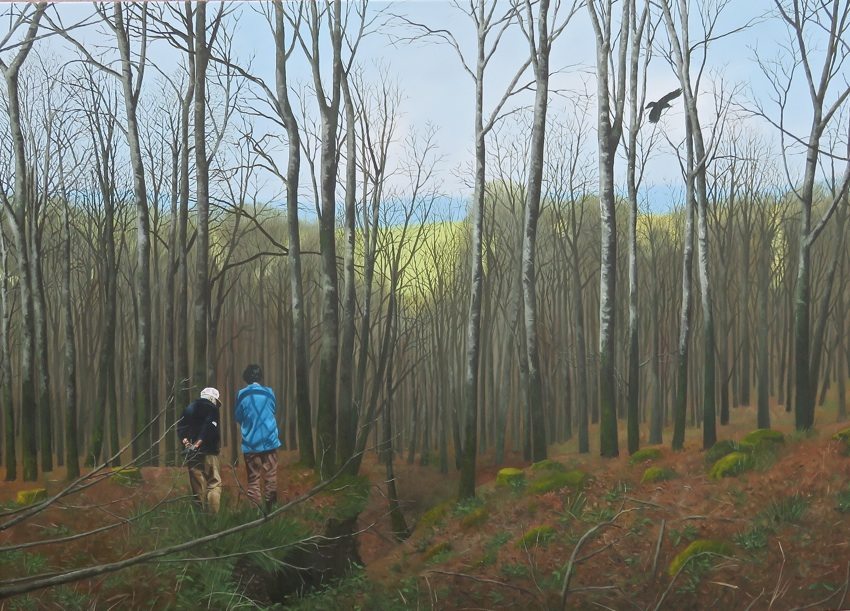

Woven from original designs by Peter Paul Rubens, the Decius Mus tapestries have been reinstalled in Kilkenny Castle following major conservation in Madrid, writes Jane Fenlon
Five 17th-century tapestries telling the story of the Roman Consul, Decius Mus, have recently been returned to Kilkenny Castle following restoration and conservation, from the Real Fabrica de Tapices (the Royal Tapestry works) in Madrid. The tapestries had been in the ownership of the Ormonde family for almost four hundred years when the Office of Public Works purchased them in the early 1990s from the Ormonde Settled Estates. Verification of the importance of these artefacts as part of our cultural heritage has been given in the following statement by tapestry expert, Guy Delmarcel, Professor Emeritus of the History of Art at Leuven University: ‘ In art historical value this is an exceptional set [of tapestries] because it is unique, if one accepts my opinion that they were woven in Holland, and not in Antwerp‚Ķ. So the set should be considered as a very important element of [Ireland’s] cultural heritage. The weaving itself is very fine, with a large amount of silks ‚Ķ and the border design is very rare too.’1
Designs for the Decius Mus cycle were painted in oil on large canvases around 1616 by the Flemish artist Peter Paul Rubens (1577-1640). The original commission was carried out for unidentified Genoese noblemen who ordered the first two sets of tapestries woven from the designs in the workshops of Jan Raes the elder. These are seen as seminal works in Rubens’ oeuvre and represent his debut in tapestry design. Following in the footsteps of the great Renaissance painters, Raphael and Leonardo da Vinci, the figures were on a much larger, heroic scale than was usual for tapestry at that time. Raphael’s series of tapestries The Acts of the Apostles, containing monumental figures provided the inspiration for several of the designs. Although it was Leonardo’s fresco, The Battle of Anghiari, that provided the concept for the battle scene that features in The Death of Decius Mus. Rubens’ designs for the Decius Mus cycle proved very popular and at least twenty further sets were produced by various workshops, some with gold and silver threads like the set now on display at the Palacio Real in Madrid.
Six of the original seven panels in the Ormonde Decius Mus set have survived. These tapestries tell the story, adapted from Livy, of the Roman Consuls Publius Decius Mus and Titus Manlius Torquatus. In a war between Romans and the Latins, the Consuls were facing an enemy that was superior in numbers. The night before the battle both men had a dream that the winning general would have to offer up his life to achieve victory. Drawing on antique sources in his depiction of the various episodes, Rubens represents martial glory and bravery on a grand scale.
The episodes depicted in the six surviving pieces from the Ormonde Collection are as follows: Decius relates his dream to his officers; Marcus Valerius consecrates Decius; Decius dismisses the Lictors; The Battle of Veseris and the Death of Decius Mus; The Funeral Obsequies of Decius Mus; Decius and Manlius go into combat against the Latins or Titus Manlius presenting the Roman Senators with plunder2 Missing from the set is the panel Decius Mus Consults the Oracle or The Interpretation of the Victim
We cannot be certain of how or when the Decius Mus tapestries came into the ownership of the Ormonde family. The earliest reference to the set occurs in an inventory taken in 1675 of the Duke and Duchess of Ormonde’s goods, when they were listed with other tapestries as ‘Antwerp hangings containing 7 pieces of the Story of Decius Mus 13 foot deep’, location not given.3 Provenance for the tapestries down to the present day was established by combining references found in the Ormonde papers with comments from visitors to Kilkenny castle over the centuries. There was also some uncertainty about the identity of the workshop where the Decius Mus set was woven. Described in the inventories as being from Antwerp, new evidence discovered during the conservation process, strongly suggests that the tapestries may be attributed to Pieter de Cracht (c.1648-1662), a tapestry dealer in Amsterdam who had workshops in both Gouda and Schoonhoven in Holland.4
When the 1675 inventory was taken it was August and so the best tapestries would have been in storage. Ten year later when the next inventory was taken, in October-November, the Decius Mus set was hanging in the dining room of Dunmore House, the Duchess of Ormonde’s large house outside Kilkenny city.5 It was common practice in aristocratic residences and indicative of the value placed on these expensive furnishings that they were stored in summer and used both for added warmth in winter and on special occasions, when they also adorned interiors.
The fortunes of the Ormonde family dropped sharply in 1715 when a Bill of Attainder was passed on the 2nd Duke of Ormonde for treason after his abortive Scottish adventure. Following his departure for exile in Europe, Kilkenny Castle was left empty except for a few members of staff but the building continued to attract visitors. The Kilcash branch of the Butler family inherited the estates and moved into the castle following the death of the 2nd Duke’s brother, Charles, Earl of Arran in 1758. Shortly afterwards the new occupants began to repair and refurbish the castle interiors. Philip Luckombe, writing in 1778 about a visit to Kilkenny, describes a set of hangings representing the story of Decius and comments on their condition: ‘Though not so glowing in their colours as the Seasons [another set of tapestries that survived] are nevertheless admirable in other respects. Pity that they should be exhibited to so little advantage.’ He criticizes the shape of the room in one of the round towers where the tapestries were hanging and adds, ‘One of the largest pieces is folded round the mixed angle at the windows, so that the part of it on the concave surface has a glaring light while that on the plain is almost in darkness.’6
Drawing on antique sources in his depiction of the various episodes, Rubens represents martial glory and bravery on a grand scale
Edward Ledwich, also visited Kilkenny as he noted in his Antiquities of Ireland, written before 1790. He remarks that the tapestries were admirably executed and contain ‘the history of Decius‚Ķ the colours fresh and lively’.7 Finally in 1824, according to the Rev. James Graves in his paper on the tapestries of Kilkenny Castle, we are told that the panels were taken down and stored before the rebuilding of the castle in the ‘Gothick’ style during the 1830s. He adds that in 1851 the set was taken out of the castle again and the six remaining pieces ‘have been repaired and relined’.8 Following the political upheavals of the early 20th century the Ormonde family decided to leave the castle and sold most of the contents in a sale in 1935. The tapestries remained in the castle where they languished in storage for another forty years or so, until 1976 when they were again repaired. In the years following that repair the tapestries were put on display hanging in the Picture Gallery at Kilkenny Castle.
From this brief history of the vicissitudes of the set of Decius Mus tapestries it may be gathered that they were subjected to many ‘repairs’ and some ill usage over the intervening period. On their arrival at the Royal Tapestry works in Madrid, close examination revealed extreme fragility in the general structure of the textiles, which displayed signs of extensive usage with areas of faded colours that confirmed exposure to direct sunlight. It was also evident that several restorations had taken place over the centuries, when areas of the tapestries had been painted, glued, darned, and rewoven. A cautionary tale in the care of historic textiles.
In contrast to the more usual blend of silk and wool used in tapestry-making, the Decius Mus set is woven using linen warps with wefts of silk and wool. This peculiarity has helped to identify them as being of Dutch rather than Flemish origin.
The use of linen warps, which are finer and less flexible than wool contributed to their delicate condition. Under the coarse hessian lining attached in the 1970s, a series of patches made from fragments of other tapestries and textiles of a different nature had at some time been sewn onto the reverse. Up to four layers of fabric were used in places in an attempt to maintain the cohesion of the textiles. In addition attempts were made to mend the damaged silk wefts by reweaving areas of the tapestry.9
This recent conservation project has resulted in five out of the six tapestries being washed, conserved and repaired. In addition the panels have been backed with new material featuring specially dyed patches in toning colours which help to support the delicate textiles as well as blending in with the original colours. They are now in a suitable consolidated condition to be displayed afresh at Kilkenny Castle, possibly on a rotation in order to preserve them for future generations to enjoy.
Acknowledgements: Mary Heffernan, the late Joe Farrell and Dolores Gaffney, OPW. Professor Guy Delmarcel of Leuven University, Isabel Fernandez and
Dr Antonio Sama, the Real Fabrica de Tapices, Madrid.
Jane Fenlon is an art historian whose area of interest lies in 16th and 17th-century Irish art and architecture.
1 Correspondence from Guy Delmarcel to the author.
2 There is some dispute about what is the correct title of this tapestry panel.
3 Jane Fenlon, Goods and Chattles, (Dublin 2003) p41.
4 I am grateful to Professor Guy Delmarcel for this information.
5 Fenlon, Goods and Chattles, p124.
6 Phillip Luckombe, A Tour Through Ireland (1780), p74.
7 Edward Ledwich, Antiquities of Ireland, 2nd edition (Dublin 1804) 480-82.
8 Rev James Graves, ‘ancient Tapestry of Kilkenny Castle, Journal of the Royal Society of Antiquaries vol.ii, 1852-53, pp3-9.
9 Report on Tapestries; Fundacion Real Fabrica de Tapices, Madrid.



